This laid-back and low-key port city is often bypassed en-route to Instagram-friendly Alberobello and trendy Salento, but those who choose to stick around are in for a treat.
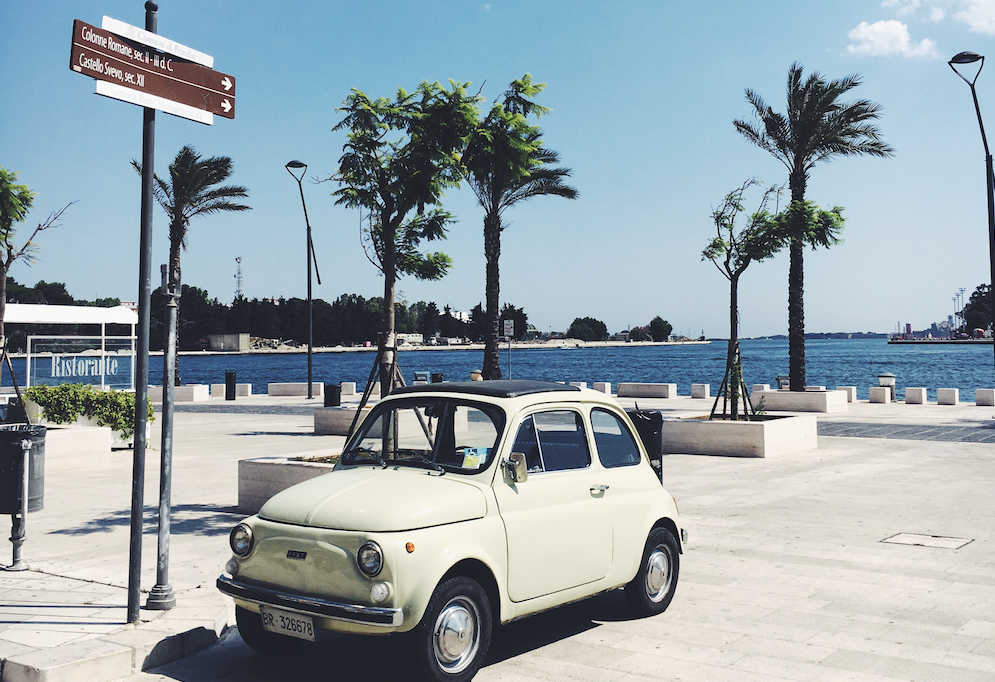
Brindisi Harbour (Photo: Allie D’Almo)
Brindisi has been described as ‘the gateway to the east’ for millennia. First came the Messapians, then the Romans in 244 BC. As the chief departure point for Greece and the Middle East, Brindisi became one of Imperial Rome’s most prized colonies. During the crusades, it became a well-worn crossroads for knights and pilgrims en-route to Jerusalem. Then, with the opening of the Suez Canal and the P&O railway line in the 19th century, Brindisi became a major gateway to Bombay and Calcutta. Aristocracy, artists, merchants and diplomats would all spend the night here before picking up the ship to Port Said, Bombay and Calcutta in the morning. It even briefly became Italy’s capital city between 1943 and 44.
After the war, Brindisi sank into a slower pace, inaccessible for most travellers without an inconvenient interconnecting flight via Rome or Milan. But with the arrival of budget airlines and the rise of Puglia as an ‘it’ destination, Brindisi is back on the radar. Most people leave Brindisi airport and hotfoot to Puglia’s most fashionable cities and coastal towns, which is a shame because the historic heart of Brindisi is a real head-turner. Rich in history, culture and food, it still feels 100% Brindisian and, unlike most pretty places, the city isn’t overrun with tourists. You could easily while away a few days strolling the marina, strolling around ancient ruins and the gleaming marina, dipping into upmarket boutiques and indulging in salt-of-the-earth pleasures like focaccia and panzerotti, but if you’ve only got 24 hours to spare, here’s how to make the most of them in Brindisi.
Things to do
First stop: ancient ruins, and lots of them. Start with a trip to the Colonne Terminli della Via Appia (Via Colonne, 53), an imposing 19-metre column located at the top of Scalinata di Virgilio (Virgil’s Staircase) that marks the end of the Apian Way. There were once two columns here, but Brindisi gifted the other to nearby Lecce in 1657 after the city lost most of its population to the plague. Incidentally, this is also allegedly the site where Virgil died, travelling back from a trip to Greece. There’s a small plaque on the staircase marking the spot.
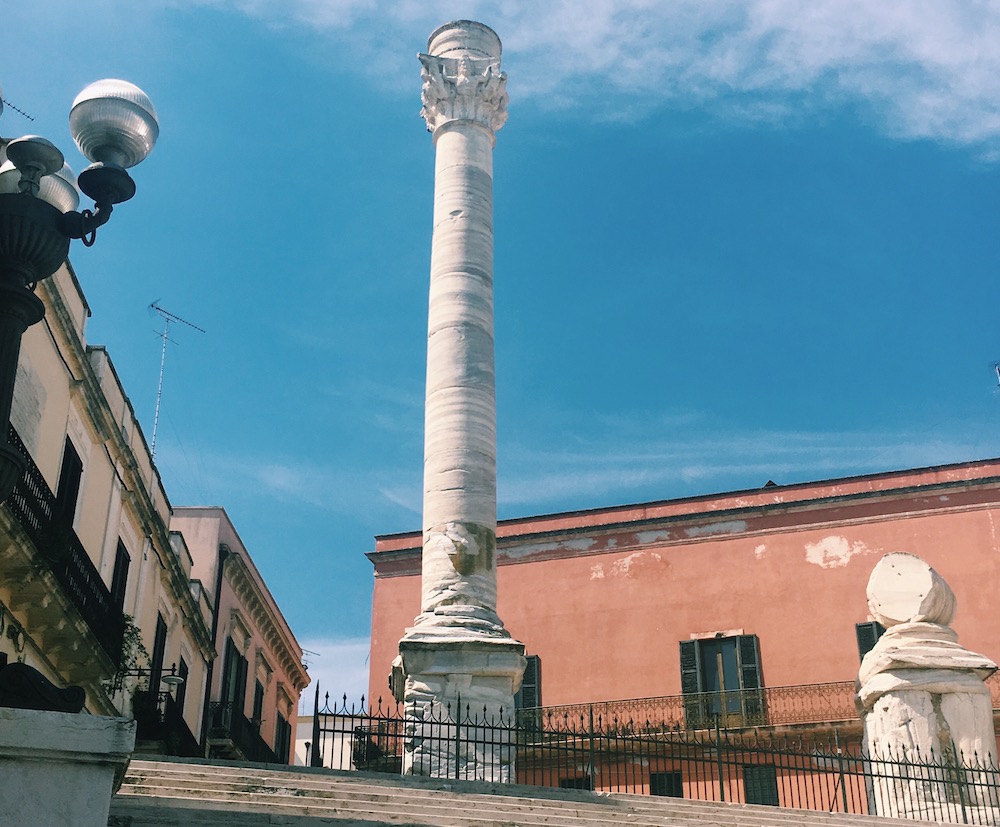
The column marks the end of the Appian Way, which starts in Rome (Photo: Allie D’Almo)
A few streets away, the 4,800 sq. metre Roman city (Via Sant 1) offers a fascinating insight into Brindisi’s illustrious past, complete with a triumphal arch erected for Emperor Augustus in recognition of his defeat against Mark Anthony and Cleopatra. The site was only unearthed during construction works for the New Verdi Theatre in the 1960s. Brindisi Archaeological Museum (Piazza del Duomo), home to some 3,000 bronze statues dating back to Imperial Rome, is well worth a visit for context too.
It’s easy to get lost in the tangle of cobbled streets that criss-cross Brindisi’s historic centre – and that’s the best way to explore it. Snake your way around the labyrinth of alleys lined with elegant palazzi, shops and restaurants to the Piazza Duomo and spend a few moments taking in the centuries-old facades of the 13th-century Loggia of Palazzo Balsamo and Basilica Cattedrale della Visitazione e di San Giovanni Battista (Piazza Duomo 12). The Romanesque church was erected in the 12th century and you can still see fragments of the original mosaic floor dating back to 1178, as well as the 16th-century baptismal font.
For more saintly sights, visit the 11th century Chiesa di San Benedetto (Via Guglielmo Marconi, 2) monastery complex and the Chiesa San Giovanni al Sepolcro (Via San Giovanni al Sepolcro, 5), an unusual circular shaped church erected for returning crusaders featuring 13th-century frescoes, such as the Deposition of Christ.
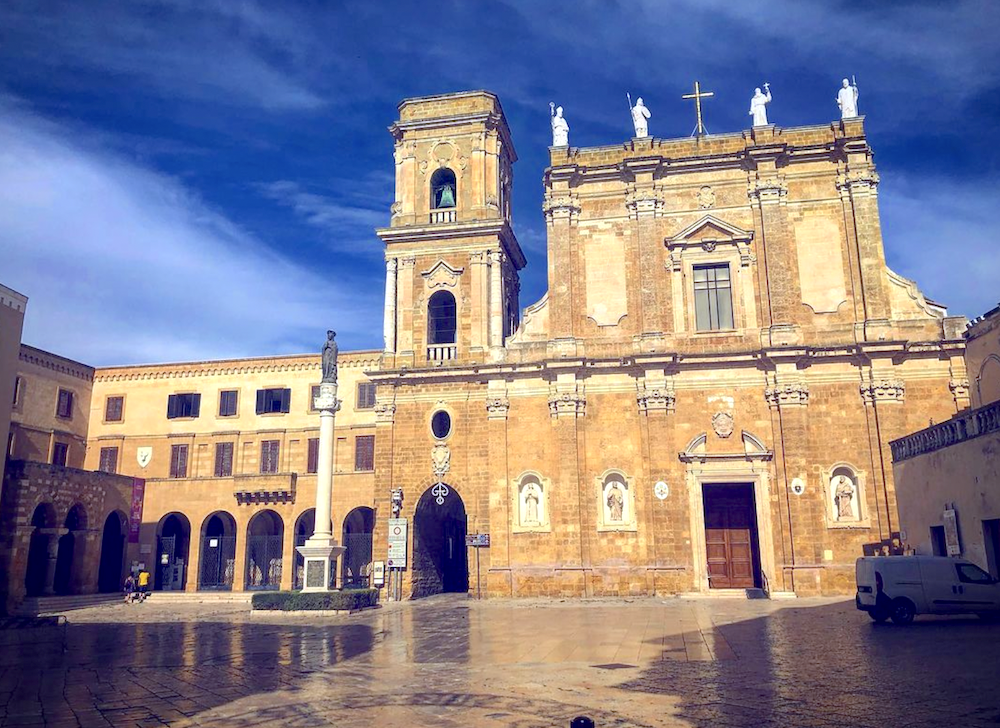
Brindisi’s most famous cathedral dates back to the 12th century (Photo: Allie D’Almo)
On hotter summer days, an afternoon trip to the beach is in order. While there isn’t a beach in the city itself, it’s an easy, if bumpy, bus journey ten minutes along the Via Materdomini to the closest sandy spot. Like most of Italy, Brinidisi’s coast is peppered with public beaches and private lidos, and there are dozens to choose from along the 15-mile coastline. Or, if you have a car, Torre Guaceto Marine Park (72012 Carovigno) is only a 20-minute drive away. The protected nature reserve is blissfully free from development and home to plant and animal species rare to this part of the world, including flamingos and turtles.
Alternatively, take a stroll along the Lungomare Regina Margherita, which runs along the gleaming white harbourfront. The wide pedestrian walkway is lined with independent restaurants, gelateria and bars on one side, and local fishing boats and yachts on the other. Time it right and you’ll get to enjoy one of the dozens of festivals hosted on the marina throughout the year too. From here, you can see the Isola Sant’Andrea, home to the Castello Alfonsino di Brindisi or Aragonese Castle (Via Torpediniera Climene, 72100), which is also open to the public. At the end of the path, you’ll find the Castello Svevo or Swabian Castle (Via dei Mille, 4), built by Frederick II in 1224.
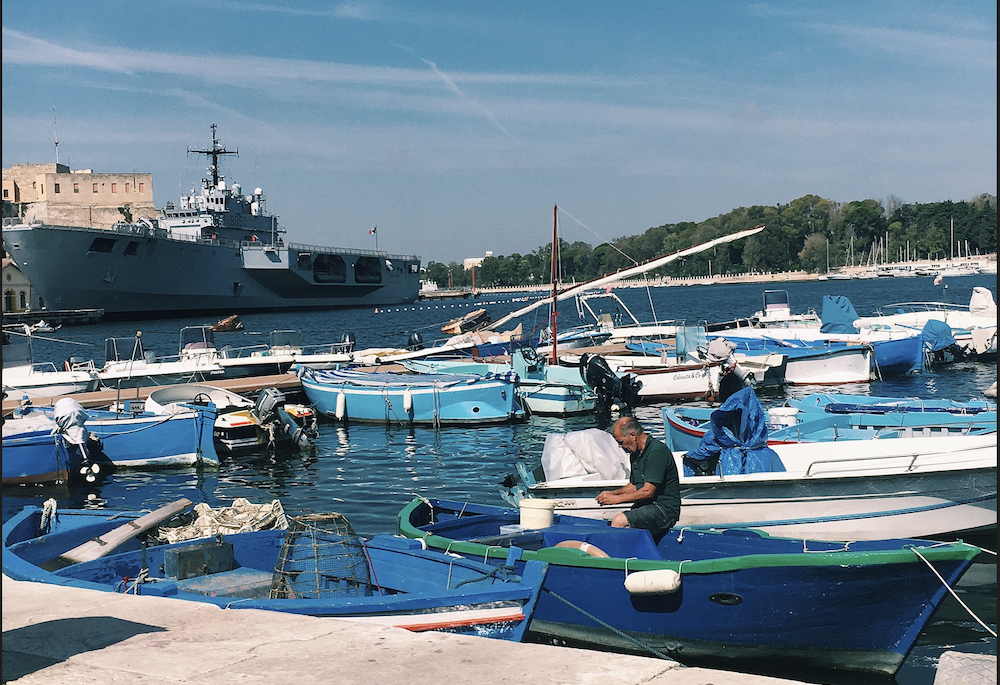
Brindisi is still a working fishing port (Photo: Allie D’Almo)
For the best sunset views, hop on the STP motorboat service to Casale. If you’ve got enough puff, it’s worth the 254-step hike to the top of the Monumento al Maranaio (Via Ammiraglio Millo, 2), a 54-metre monument dedicated to fallen soldiers. Or, stop for an aperitivo in the park and soak in the views of the city as the sun goes down. Back in Brindisi, join the coiffured Brindisians after dinner with a passegeata (stroll) along the harbour clutching a post-dinner gelato.
Where to stay
A true grand dame of a bygone era, the Grande Albergo Internazionale (Viale Regina Margherita, 23) was inaugurated in 1870 as the ‘Hotel of the East Indies’ to serve thousands of passengers travelling along the P&O line to Bombay and Calcutta. It was once one of the Mediterranean’s most renowned hotels. Countless 20th-century icons have stayed here, from King Victor Emmanuel III to Winston Churchill to Mahatma Gandhi. While it might fall short of today’s expectations for five-star hotels, it’s still dripping in age-old elegance from its marble floors to its gleaming chandeliers.
For those looking to stretch the budget as far as possible, there’s a handful of excellent B&Bs peppered around the city offering simple and affordable rooms. B&B La Sorgente (Via Passante, 9) is an excellent option, enjoying a plum position in the heart of the city without the price tag. Choose from several cheap and cheerful rooms or check into the ‘double room with spa bath’, which a pebble dash ‘grotto’ with a bubbling jacuzzi.
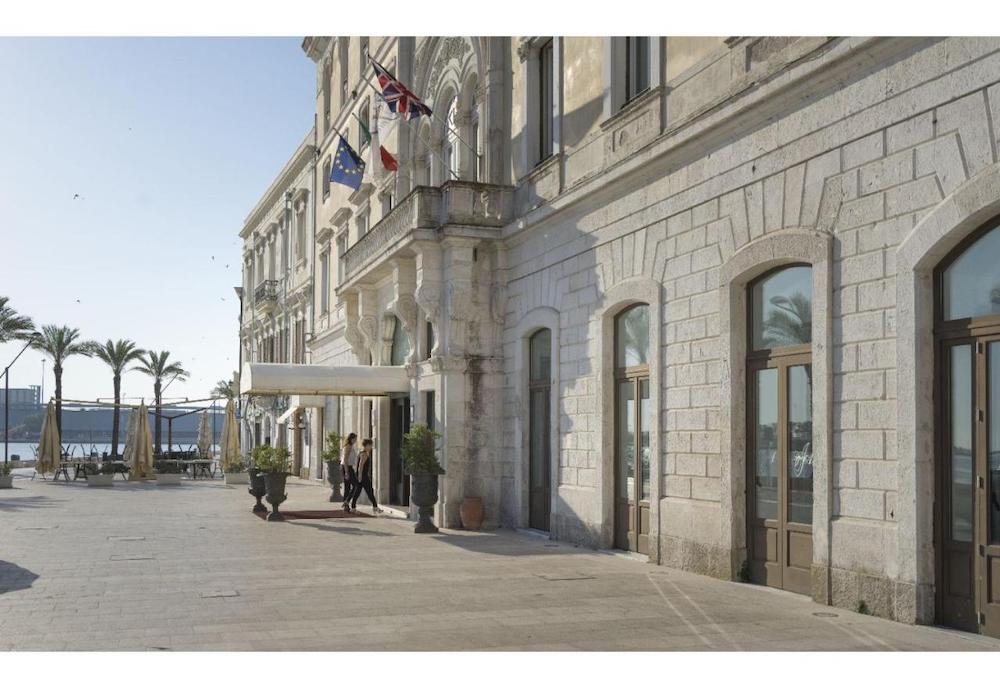
The Hotel Internazionale boasts a plum position right on the harbour (Photo: Booking.com)
If you’re looking for a mid-range boutique hotel, try the Palazzo Pinto (Via Masaniello, 30). Housed in a 1901 palazzo built by a highly esteemed wine exporter, the charmingly re-imagined boutique offers two bright and spacious double rooms with an option to enjoy breakfast in bed or out on the large terrace.
Eat and drink
Brits and Americans sniff at Italy’s interpretation of breakfast which, at its best, usually involves an espresso and a biscuit. It’s hardly eggs and bacon fare in Brindisi either, but it is possible to find something just as pleasing: the rusticci, a hot pillow of pastry filled with fresh tomato, bechamel and cheese. Or for a sweet treat, pick up a cornetto con crema or a pasticciotto, a large pebble-shaped pastry filled with custard. Choose any one of the bars lining Corso Umberto for your pick-me-up, and wash it down with espresso at the bar.
Lunches in Brindisi are long and lazy, but if you’re saving yourself for dinner or off to the beach, take a trip to one of the city’s many markets for a gourmet picnic. Mercato Piazza Vittoria is the smallest, but most centrally located of them all. It’s the best place to sample Puglia’s famous produce as close to the source as you can get without visiting a farm. It’s a colourful medley of fresh fruit, vegetables, cheese and sausages – think big, beautiful burrata and wheels of snow-white ricotta, blood oranges and sacks of mussels, reeled in from the harbour a few hours before.
La Locanda degli Schiavoni (Via Giovanni Tarantini, 41) doesn’t look like much from the outside, but come 9pm you’ll be competing with a queue of hungry families snaking around the building. The small, family-run restaurant serves up piles of perfect pasta and Pugliese classics like orecchiette (tiny ear-shaped pasta), braciola (rolled meat stuffed with ricotta and herbs) and fresh seafood. Prices are cheap and service is slap-dash but charming.
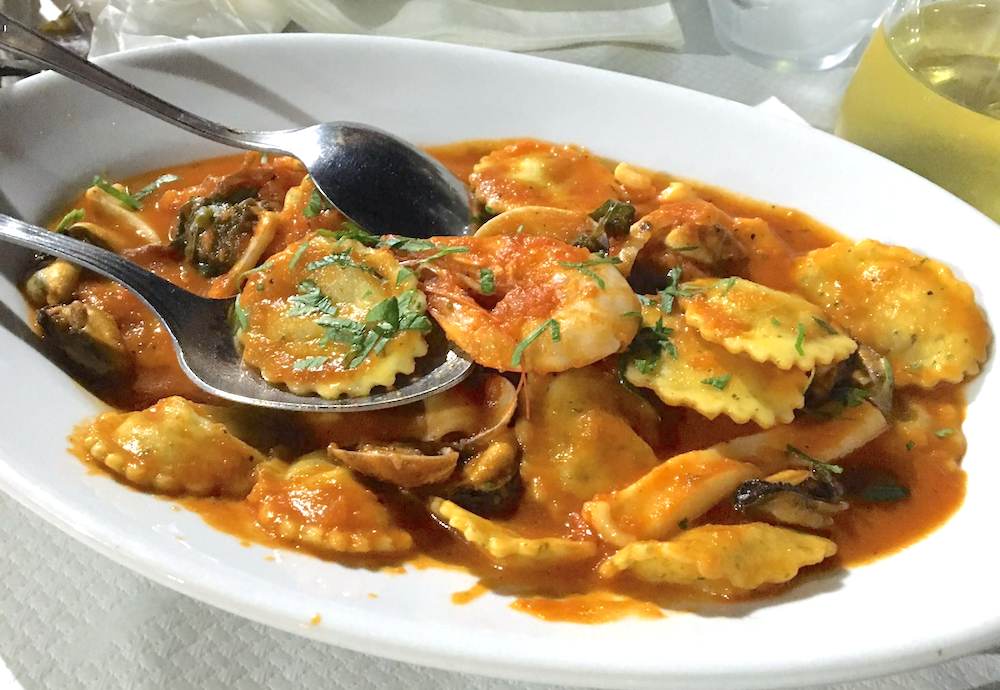
Classic Pugliese cuisine (Photo: Allie D’Almo)
For dinner with a view, Iaccato (Via Lennio Flaco, 32) is an excellent option. Set in a glass box overlooking the marina, it’s one of Brindisi’s more upmarket offerings, but dinner for two is unlikely to set you back more than €50. Start with the antipasti di mare, served raw, featuring fresh catch usually involving cuttlefish, clams, mussels, anchovies and – if you’re lucky – sea urchins. If that sounds too adventurous for your palate, the fritto misto (fried seafood) and cozze impepata (mussels sauteed with paper) are superb.
Equally pleasurable and even cheaper is Pizzeria Romanelli (Via Santa Lucia, 3). The restaurant itself was closed indefinitely at the time of research due to Covid, but it is still operating its hole-in-the-wall, which has been going since the 1940s. Pick up a pizza or a panzerotti, a small and lightly-fried version of a calzone served in a paper napkin. Happiness really is as simple as a frosty bottle of beer in one hand and a hot parcel of mozzarella in the other.